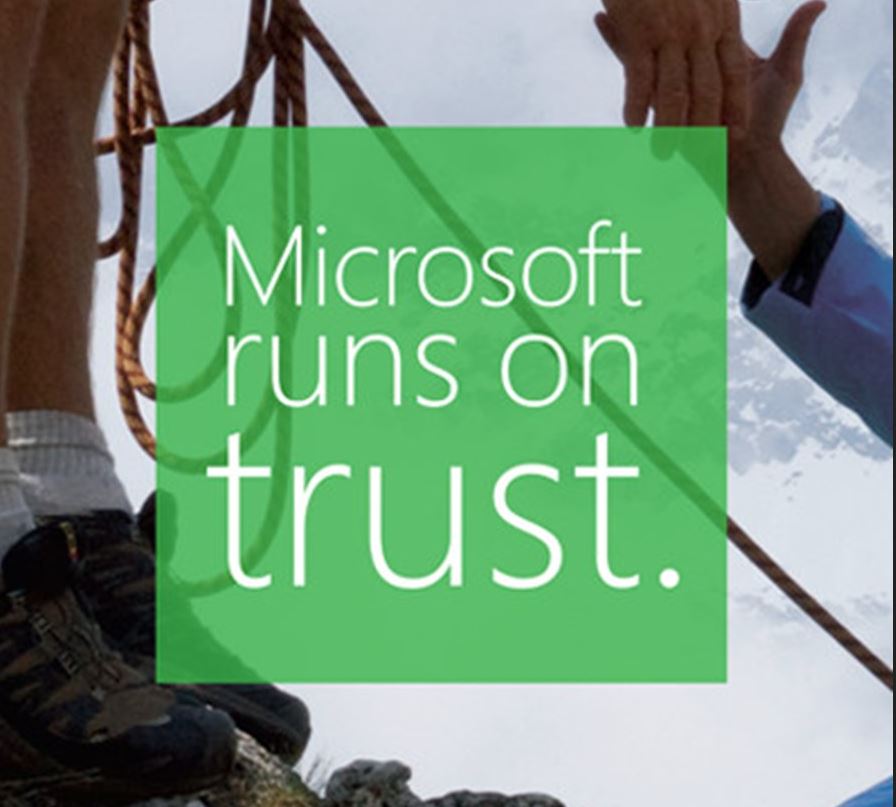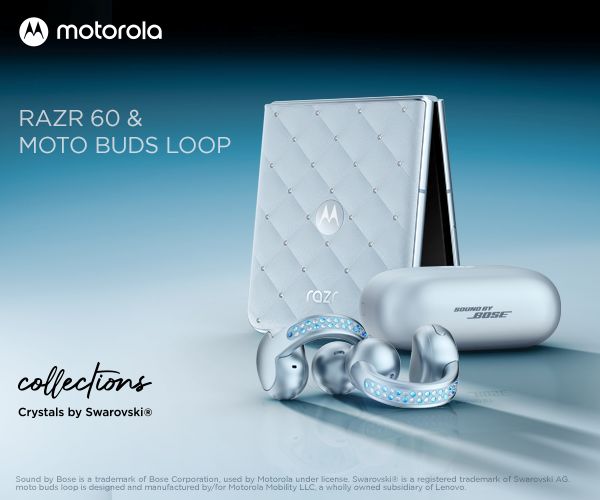Can you trust Microsoft? It turns out that US citizens trust Microsoft more than Google because its revenue is not dependent on advertising. Why? About 75% of the world’s desktop/laptop/servers run Windows.
Can you trust Microsoft is part of our ongoing Trust Series, where we apply the same objective analysis to major tech companies, including:
- Can you trust anything in a digital world? No!
- Can you trust Apple? It would have you believe so
- Can you trust Google? Yes, but it depends on your definition
- Can you trust Facebook? No, non, nine, nee, nay, nej, não, όχι, nyet,
But there is a lot more than trusting a brand.
Whether you trust Microsoft depends on what you’re trusting it with and your trust standards.
For example, Outlook mail clients have about 50% of the paid consumer market and far more of the commercial market. Gmail has about 35% overall. We trust Microsoft (and Google) with the safety of our emails—a potential gold mine of information if ever hacked and AI-mined.
The paid Microsoft 365 (Word, Excel, PowerPoint, etc.) has about 50% market share of the Office Suites, and it is a far higher percentage when you look at commercial Windows and Mac use. Google Docs, Sheets, Slides, etc. Personal has the advantage of being free, and as it is cloud-based, it works in any operating system web browser, so it skews the market share somewhat. The fact that students must learn and use Microsoft products at most schools and later in the workforce means we trust Microsoft.
OneDrive is built into Windows user accounts as the default cloud storage and backup. In a business sense, OneDrive is Azure. Amazon Web Services has 31% of that market, Microsoft 25%, and Google Cloud 10%. In the West, there has been almost a 100% shift away from Chinese cloud providers like Alibaba and Tencent.
Personal experience – a segue
I interviewed Bill Gates in the early 90s, around Windows 3.1. He was all about making the world a better place through computing – there was not an ounce of ‘me’ in any of his statements. I recall him saying something like, “If Microsoft does a better job, others will join”. I enjoyed interviewing this erudite, altruistic man who shaped so much of the early personal computer and server landscape.
Bill also arranged for me to interview Steve Jobs. While there was no doubt about Job’s passion for Apple, his greed and ambition showed through. It was about him and how much Apple could fleece its ‘sheep’. His words to me were, “Show me the turkeys” – a graphical representation using an Apple Newton PDA and Apple Macintosh II (forerunner to iMac) to show how many had bought his products today (accompanied by Gobble, Gobble noises – bizarre). I have to say that while I admired what he had done, I left the interview feeling sullied. The man was flawed, as evidenced by the many documentaries made since his death.
Microsoft stages
Stage one – open the Gates – 1975-2000
In 1975, Bill Gates and Paul Allen bought Q-DOS (Quick and Dirty OS) rights from Seattle Computer Products and developed PC-DOS for IBM and MS-DOS for other 8086 CPUs. Even back then, the media said that Gates had stolen the opportunity via foul play. Sorry, more media hype as cleanroom reverse engineering has proven many times since.

Microsoft Phase Two 2000-2014 – very public spats, blunders, and a ballistic second CEO

Steve Ballmer took over from Gates and ran it “his way” for 15 years. Ballmer was a great businessman able to maximise profits and squeeze margins, but he was also famous for bully-boy tactics. It is fair to say that this style did not win Microsoft any friends and gave ‘tin foil hats’ (a mix of the paranoid, Microsoft haters, and Apple fanboys) much cannon fodder to try and discredit Microsoft.
Rumour has it that Apple was behind the scenes, helping to destroy its competitor’s credibility.
Under Ballmer, Microsoft failed to understand and execute the five most important technology trends of the 21st century: search, smartphones, mobility, media, and cloud. To Ballmer, Microsoft was still firmly focused on Windows and Office and let’s ignore the now-infamous Nokia phone acquisition – too little – too late.
By the end of 2016, 1.5 billion smartphones were sold worldwide, and MS’s excellent Windows Mobile OS did not even rate.
Microsoft phase three 2014+ – enter Satya Nadella
Satya Nadella, an Indian-American Hindu, a Microsoft employee since 1992 and had led the cloud computing project, took over. He quickly organised Microsoft as mobile-first (irrespective of the device) and cloud-first (Azure), uncoupled the Office and Azure teams from Windows, killed the Nokia phone business, and released a new version of Windows—the last version. He also encouraged working with Apple, Salesforce, IBM, Dropbox, Linux and many competitors to ‘empower every person and every organisation on the planet to achieve more’.

As Apple has long done, Microsoft followed the operating-system-as-a-service (OSaS) model, which was necessary to prevent fragmentation and increase security. Nadella also invested significant resources in the open-source movement, augmented reality, and AI. He saved Microsoft from irrelevance.
Critics ran out of cannon fodder – Nadella was a saviour, not a sinner.
Under Nadella, Microsoft has immensely advanced personal and server computing and productivity. Windows 10/11 and Microsoft 365 – staples of the personal computer – have had far more impact than macOS and iWork ever will. His focus on the cloud and investing in new technologies has made Microsoft one of, if not the largest, world’s tech companies by market cap.
Nadella is focused on responsible AI development and guarding human rights and privacy. He even recalled ‘Recall’ an AI component of CoPilot to ensure it protected users’ privacy.
Critics often joke that Microsoft gets it right on the third time.
How does Microsoft make money?
In 2023, Microsoft’s revenue was US$236.58 billion ($83.43 billion in 2013, growing by double-digits). Microsoft (like most larger companies) does not have to disclose revenue breakdowns. Analysts say about 45% of this revenue comes from Intelligent Cloud (Azure), 37% from Productivity and Business processes, and 18% ($42.5b) from personal computing.
Personal computing includes reference to ‘Search and news advertising, comprising Bing (including Bing Chat), Microsoft News, Microsoft Edge, and third-party affiliates (like Yahoo)’. Analysts estimate that advertising revenue rose 11% in FY 23 to about US$12.21 billion (source Statistica), an almost insignificant amount compared to Google ($238b), Meta ($170b), and Amazon ($170b).
What data does Microsoft gather about a consumer?
About 70% of the world uses Microsoft in some way. Here is what we found for consumers:
- Windows device data (Xbox and other MS devices) is used for telemetry and product improvement. There is no monetisation.
- Microsoft 365 has diagnostic data and optional diagnostic data – ditto.
- Cortana (voice assistant that is no more) goes into a highly transparent and editable notebook that the user controls.
- Bing (search/location) data is for advertising. It is not sold to third parties. You can turn off the Universal Advertising Identifier and enable other privacy provisions.
- Any other data shows in your Microsoft Account, and you have complete control.
- Microsoft does not read your email, calendar, Azure/OneDrive/SharePoint files unless you ask it to include data from that in requests (just like asking OK Google about your days’ appointments)
- Microsoft provides Windows Defender for free (a creditable AV solution) and continually hardens its products against advanced persistent threats and hacking. It gathers threat data and telemetry from Windows devices.
- No hacker has ever breached Office/Outlook 365/Azure/OneDrive security, but hackers access users accounts by tricking them into revealing passwords
You can read more about consumer privacy here.
The bottom line is that we (me included, see Ban Microsoft Edge – enough of the crapware) have no evidence that Microsoft is monetising our data other than anonymous advertising serving, which accounts for less than 5% of revenue.
Can you trust Microsoft?
Microsoft’s trustworthiness is 100% based on its commitment to security and privacy. It has invested billions in fortifying its products and services against evolving security threats, employing state-of-the-art encryption protocols, robust firewalls, and advanced threat detection mechanisms from the enterprise-grade security features embedded within its Azure cloud platform to the multi-layered defence mechanisms in Windows operating systems.

Like any large corporation, Microsoft operates within legal and ethical boundaries and has a reputation to maintain. Microsoft has been involved in numerous lawsuits, but significantly fewer now—some as the plaintiff and some as the defendant. Wikipedia does a good job chronicling these here.
While it has faced controversies and criticisms, it also has a track record of delivering reliable software and services to billions of users worldwide.
Satya Nadella said:
Microsoft does not have a ‘targeting business at large’ on its platforms. Instead, it leverages subscriptions with limited ad-supported businesses to help customers get more out of their data and their time.
Google and Amazon use revenue from advertising and retail to support their cloud businesses and other ventures — which might run counter to the interests of their customers.
Trust is not just in the technology, the ethics around AI, privacy, and security—all that also matters—but trust in the business model. Our business model depends on one thing and one thing alone: the world’s having more trust in technology.
I think people are going to put more value on their data. Even individual consumers will wake up to the fact that there’s nothing free. It’s not to say that there isn’t room for someone to say, ‘Yeah, this is a good trade, where I’m using a free service in exchange for some data.’ But there’s nothing free about it.











Comments